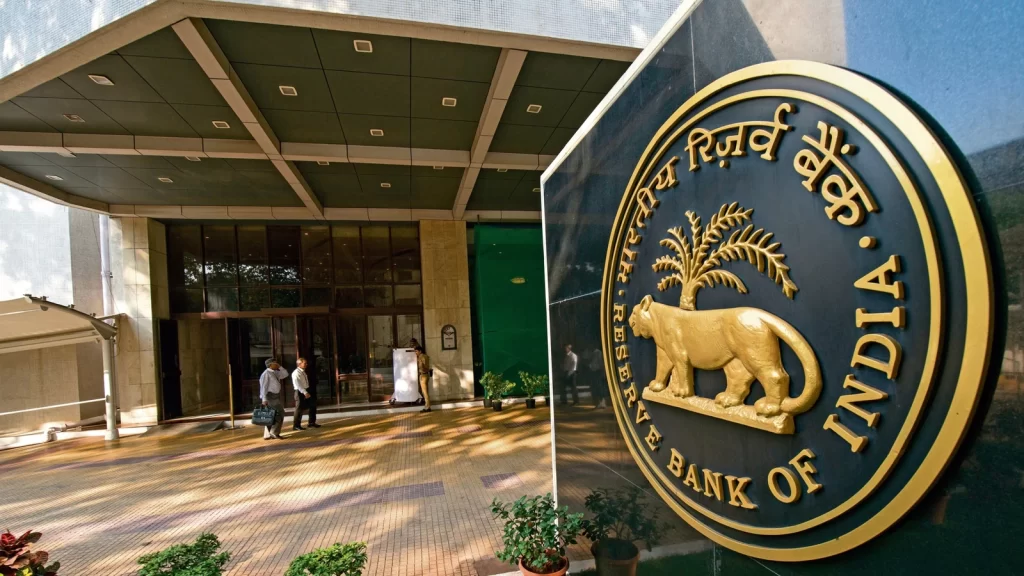
The Reserve Bank of India (RBI) decided to maintain the status quo by keeping the repo rate unchanged at 6.5%. The viewpoints of prominent stakeholders in the banking, financial services, and insurance (BFSI) sector, as well as economists and industry leaders regarding the RBI’s policy announcements after the Monetary Policy Committee (MPC) meeting on 8th June 2023, provide an intriguing perspective:
Dinesh Khara, Chairman, SBI: The RBI’s decision to pause was largely on expected lines. The communication was nuanced and tailored to anchor market expectations for the future in terms of a durable glide path of inflation. The bouquet of policy changes on the development front covers a wide spectrum and prioritizes resolution, risk management, and digital innovation, and addresses issues relating to market microstructure. Overall, the policy is an apt statement in the backdrop of a global economy that is still mired in growth-related uncertainties and labour market rigidities.
Sugandh Saxena, CEO, Fintech Association for Consumer Empowerment (FACE): The fintechs have been harbinger in leveraging digital technology and innovation in expanding formal credit to un/underserved segments and mainstreaming ‘digital credit’ in the market. The fintech lending industry has benefited immensely from progressive and enabling regulations by the RBI focused on responsible lending. Beginning with digital lending guidelines last September, the industry is adapting extremely well to regulations putting earnest efforts around customer protection, compliance, risk management, and governance. The announcement by the RBI to put in place a regulatory framework for permitting Default Loss Guarantee arrangements in digital lending is another testament to the regulatory support and recognition of the role of fintech lending and innovation in expanding formal credit. As we eagerly wait for the much-anticipated directions, we welcome and thank the RBI for their steadfast support, recognition and trust in the fintech lending model. For a young and dynamic digital lending industry, this will bring much-needed certainty and confidence to the market and contribute to its sustainable progress.
Prerna Singhvi, Vice President, Economic Policy and Research, National Stock Exchange of India: The headline inflation projection for FY24 has been curtailed by a modest 10bps to 5.1%, with the progress of Southwest monsoon amidst the El Nino effect, movement in crude oil prices and global financial market volatility imparting uncertainty to the outlook. The MPC’s commitment to keeping inflation expectations anchored and bringing headline inflation closer to the 4% target is reflected in its decision of keeping the stance unchanged, thereby retaining flexibility on future policy actions. This seems prudent amidst an uncertain global environment. Household inflation expectations–both for the three-month and one-year ahead periods—have been tapering off, signaling anchored inflation expectations. The RBI trimmed its headline CPI inflation forecast for FY24 downwards by a modest 10bps to 5.1% on the backdrop of an unharmed rabi harvest and expectations of a normal monsoon.
Atul Kumar Goel, MD and CEO of Punjab National Bank: RBI’s announcement on allowing scheduled commercial banks to set their own borrowing limits has given much-required flexibility to banks. RBI has decided to come out with a regulatory framework for permitting First Loss Default Guarantee (FLDG) arrangements in digital lending, which will promote more transparency and discipline in the digital lending environment. Similarly, proposing the framework for widening the scope of resolution of stressed assets indicates that RBI is right on track to instilling harmonization across Regulated Entities. RBI continues to adopt a liberal approach towards BBPS by streamlining its processes to bring more competence and boost involvement. Further, action on internationalizing RuPay debit cards and prepaid cards points to RBI’s earnest approach to broad-basing the scope of the cards and increasing comfort for Indians traveling abroad. Overall, it seems to be an action-oriented policy with an evenly balanced approach. However, in view of the dynamic world economic scenario, we anticipate that RBI will remain watchful.
Business Economics Banking, YES Bank: The RBI will now be focused on getting inflation down to 4% on a durable basis and would not continue to be happy operating within the tolerance band of 4+/-2%. Given RBI’s and our own inflation trajectory, we do not see a durable drop in inflation and expect H2FY24 average inflation to be higher. Overall, we push out any rate cut expectations into FY25, unless the growth-inflation mix diverges significantly from the baseline. The surplus liquidity led the RBI to announce three VRRRs in June 2023, which is a clear indication of RBI’s discomfort with the extent of liquidity surpluses. Deputy Governor Dr Patra highlighted that the central bank would be comfortable with the liquidity level wherein the call money rate is aligned with the repo rate. As the RBI is focused on the withdrawal of surplus liquidity, the expectations of the market for a CRR cut or even an OMO are lowered.
Amar Ambani, Head Institutional Equities, Yes Securities: Monetary tightening has been paused and we believe it’s the end of the rate hike cycle. Although liquidity conditions have improved lately due to higher government spending and gradual withdrawal of Rs 2,000 denomination notes, this is a rapidly changing variable, and the surplus in the banking system is expected to wane, on account of advance tax outflows and growing credit demand. We believe inflation is on a sustained decline with a lag impact of RBI rate hikes and prices of commodities declining drastically. Our reading is that disrupted supply across the world is back on stream and therefore fall in the price of coal, natural gas, oil, steel, wheat, lumber, palm oil, milk etc is sustainable. RBI is bound to change its stance in the time to come.
Subhrakant Panda, President, FICCI: The Governor’s objective assessment of the economy shows that growth momentum will continue in 2023-24 despite headwinds; there is also a clear moderation in the inflation trajectory, although risks remain on account of uncertainty posed by El Niño and geopolitical developments. FICCI expects the impact of monetary policy interventions till date to pave the way for reversal of the rate hike cycle in due course.
Karthik Srinivasan, Senior Vice President, Group Head, Financial Sector Ratings, ICRA: While most of the regulated entities have already stopped taking FLDGs on new loans originated by non-regulated fin-techs, the proposal to announce a regulatory framework will bring in more clarity as digital lending is going to stay and increase substantially in scale. if non-regulated entities are allowed to offer FLDGs with necessary safeguards, it could provide further impetus to digital lending. The banks are already permitted to set their own limits for borrowing in term money and a similar proposal for call and notice money borrowings will allow more flexibility to banks. With the current volatility in liquidity conditions banks can plan liquidity management better and the LCR requirements will ensure that dependence on call borrowing is under check. The likely inclusion of non-banks in the resolution framework can help improve their ability to resolve the stressed assets and at a relatively lower haircut. The Covid restructuring required the banks to have an independent credit evaluation (ICE) for the resolution plan (RP) to be implemented for certain large wholesale borrowers. This also resulted in restructuring, largely limited to viable cases. A similar proposal could be expected for loan restructuring of borrowers that are affected by natural calamities.
Deepak Sood, Secretary General, ASSOCHAM: Focus of the monetary policy is clearly on further taming inflation for stable growth. We are confident that the RBI would ensure that adequate liquidity is maintained in the banking system and credit growth remains robust. The assessment as reflected in RBI Governor’s statement gives clear signals of revival in the investment sentiment despite global headwinds. However, the capital cost would remain a key factor for a real boost to new investment. ASSOCHAM has hailed several measures like the issuance of prepaid RuPay forex cards for international travelers, simplifying guidelines under FEMA for Authorised Persons in the forex market, and streamlining BBPS. Digital drive remains the focus area for the RBI. This would give further depth to India Stack of financial architecture.
Achala Jethmalani, Economist, RBL Bank: We expect a pause on policy rates through CY2023 while modulating system liquidity. The window for policy pivot to rate cuts could open up in 1H CY2024, if the inflation trajectory warrants given that growth remains robust.
Siddhartha Sanyal, Chief Economist & Head Research, Bandhan Bank: Interestingly, despite lowering the Q1 FY24 CPI inflation forecast by 50 basis points, the CPI projection for the full year was kept almost unchanged. Overall, the central bank is expected to keep the repo rate unchanged for several quarters, likely beyond the current calendar year. Monetary policy in India of late has been prudent, decisive and often front-loaded, a trend that is likely to continue in the foreseeable future.
Rajesh Sharma, MD, Capri Global Capital: The announcement by the RBI to keep the repo rate unchanged is an encouraging sign to keep the positive sentiment of borrowers and would give a big boost to demand for credit appetite. It will help to stabilize the interest rate cycle. There will be a collective sigh of relief from homeowners since they have been feeling the strain of increased interest rates and longer loan terms. The pause in the rate cycle will also aid relief for MSME borrowers who are yet to recover from the pandemic stress and higher cost of borrowing.
Suman Chowdhury, Chief Economist and Head, Research, Acuité Ratings & Research: The RBI has taken note of the steady if not strong growth undercurrents in the domestic economy as observed from the high-frequency indicators and the latest GDP data of Q4FY23. It has continued to be optimistic about the current year’s growth prospects and kept it pegged at 6.5%. Given such expectations of the central bank on growth-inflation dynamics, the likelihood of an extended pause on interest rates has increased. In our opinion, any possible rate cut may not materialize before the last quarter of FY24.
SCBs can set borrowing limits in Call and Notice Money Markets







